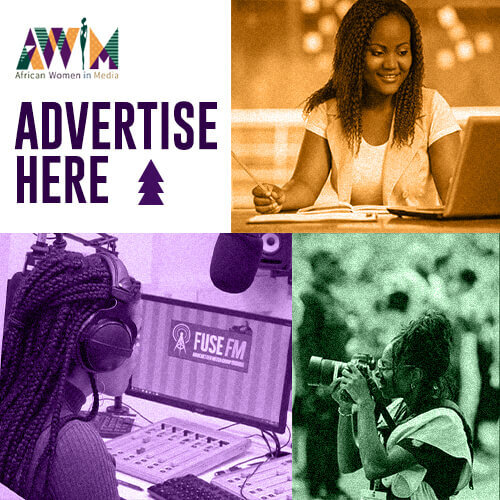Groundbreaking Workshop on AI and Technology-Facilitated Gender-Based Violence at AWiM24
Trending
Saturday May 31, 2025
Trending

As I walk through Lindi area of Kibra, the largest slum in Kenya and Africa to conduct interviews for my pitch, so many questions linger in my mind considering the rate of crime; how safe am I? How safe are my equipment? Could there be someone tracking me since I look more of a stranger?
Armed with my notebook on Safety of Journalists as taught by Vicensia Fuko (Thanks to the AWiM project in partnership with UNESCO), I flip through to check what safety measures I need to employ. I land on dealing with safety threats sub-topic and decide to seek trusted help.
I make a U-turn and head to the D.C’s office and with the presence of the police, I feel safer. I call my contact person who arrives after a short while. As we walk through our starting venue, he explains to me that it was important for me to call him since residents could easily tell that I was a stranger and it would have been disastrous as all eyes were now on us. Ali (My contact) keeps greeting them to divert their attention. He also offers to carry my equipment saying “someone can easily grab from you but for me, I am a ‘celeb’!” Lesson from the unit applied; seek trusted help. Don’t venture in an unfamiliar ground alone!
During the briefing with my interviewees, I realize it was important for me to remember that I have a duty to the public on ethical issues. Most of my interviewees are either pregnant, or living with other conditions. It was important that I seek their consent before filming them as well as respect their privacy. I could not conduct two interviews as the would-be interviewees were uneasy with cameras. I chose to respect that.
This unit has taught me the most valuable aspects of journalism: There is need to establish local contacts for a story to be successful. I also learnt that journalists need to put into consideration safety dynamics of locations they intend to visit. As we walk through the sprawling slum with sewer lines all over, half of residents without masks and insisting on shaking hands, I realize health safety is a big issue in this area. My sanitizer comes in handy, one of my interviewees tells me, “If you don’t greet them, they won’t give you audience.” They claim Covid-19 is for the rich! This almost shakes me, but I have to remain courageous to go through the interviews, but keep in check my self-care.
I picked a note on how to write a gender cognizant pitch on the Identifying Gendered Angles and Impact stories course as taught by Ruona Meyer (I am so passionate about gender and this was a must learn). My interviewees are mostly women and the lesson has come in handy that rather than focus on the 4Fs, I will focus on their contribution to the advancement of health status of the community. Initially, my pitch was focused on the negative aspects, i.e. the challenges they face; this has since changed!!
I am researching to find out what has been written on my pitch so that I concentrate on what has not been covered. I also intend to tell the story in a more interesting way as I try to engage my audience. This is something I have picked from Balanced Health and science journalism. Learning the terminologies as explained by Esther Nakazzi has helped me understand their differences. I also have never thought of starting a blog expressing in first person, now I will start one, thanks to Esther.
In my story, I have an interview of a woman who has a son living with cerebral palsy. This is where I need to practice the concept of humanity. After reading the Kevin Carter article as provided by Sumeya Gasa on Ethical Reporting, I indeed came across a real case where humanity being the most single central factor in our practice as journalists. This case has made me indeed realize that our work is very practical and has impact on other people’s lives. Despite his mother giving me consent to film the boy, I was still hesitant and my conscious allowed me to hide his face.
I have realized that to be a better journalist, one needs to employ these skills. It is the first time I am encountering most of them, my way of doing things has totally changed, thanks to AWiM and all the trainers (Actually all the modules are very much applicable in my story, now that I am writing a health related one), I have just started compiling my pitch and I know such lessons on Automated Content, Algorithms and Accessing, Interpreting and Fact checking Scientific Information will too come in handy. My testimonial is actually on what I have put into practice already.
This project is very key to all journalists and I feel it needs to be introduced in college units. This way, all journalists can enhance professionalism from the onset of their career. I would not hesitate to recommend my fellow women to enroll in the second cohort. I am so excited that I am among the first cohorts!
Thanks AWiM, thanks to all trainers and to UNESCO!!
We’re not gonna spam. We’ll try at least.

Copyright 2020. African Women In Media
Copyright 2020. African Women In Media
Recent Comments